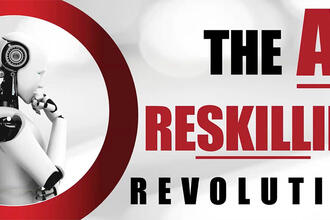
Managing Emerging Technologies - Effects of the Digital Transformation
By Thomas Brier
“Text” has been – in common usage – a noun. It remains a noun but has taken on an additional meaning. It is now – in more common usage – a verb!
“App” is a modern term, derived from the traditional rationale for the assessment of the value of computers to business. This is the idea that computers – from the mainframes of the past to the laptops of today – can be applied to solve business problems and help in generating business revenue.
These two examples are everyday verbal indicators of the trend toward applying rapidly emerging technologies to modern business and everyday life. What are the consequences for those businesses that are late to the game? According to a 2017 article published by McKinsey:
“Since 2000, over 50 percent of Fortune 500 companies have been acquired, merged, or declared bankruptcy, with no end in sight. In their wake, we are seeing a mass “speciation” of innovative corporate entities with largely new DNA, such as Amazon, Box, Facebook, Square, Twilio, Uber, WeWork, and Zappos.”
How long has the digital transformation taken? Many trace it back to the introduction of the Intel 4004, a 4-bit central processing unit (CPU) released by Intel Corporation in 1971. The integration of a whole CPU onto a single chip significantly reduced cost, resulting in greater reliability as well. Over the decades, the resulting technology improvements have been remarkable.
There are implications of new technologies in many environments. Work spaces are undergoing significant change. Social expectations have been considerably altered. There is the “always-on” mentality – the expectation that the recipient of a voice or “text” communication will reply immediately. With ubiquitous devices – handheld cellular phones, devices that fit the ear and phones mounted in cars – most callers expect instant response. What has been traditional in the business world has now become normal behavior socially.
In the business world there are ramifications to infrastructure, applications and governance approaches for assimilating new technologies. Traditional IT governance relates to the control of organizational structures that impact information-related assets and technology. Effective governance provides guidance to ensure that an IT organization is performing successfully. Historically, board-level executives deferred key IT decisions to the firm’s IT and business leaders. Modern IT governance involves everyone: board members, executive management and staff. What is different about IT governance for emerging technologies? Executive roles are changing. More emphasis has to be placed on identifying technologies and understanding their implications. Effective infrastructures have to be built.
I plan to discuss these and related topics with students in the Mini-MBA: Information Technology Management offered by Rutgers Business School Executive Education program in October of this year.
Sources: Why Digital Transformation is now on the CEO’s Shoulders, McKinsey Quarterly, 12/2017; 4 Emerging Technologies that Will Drive Digital Businesses, cio.com, 5/2016
Press: For all media inquiries see our Media Kit


